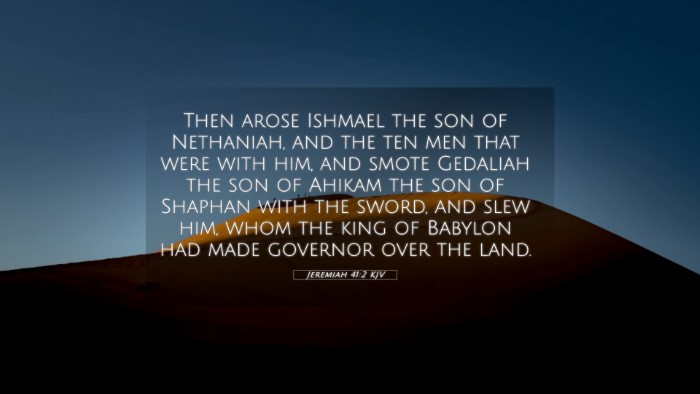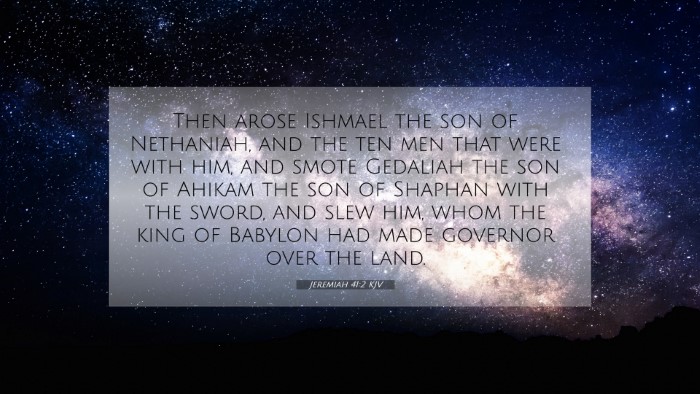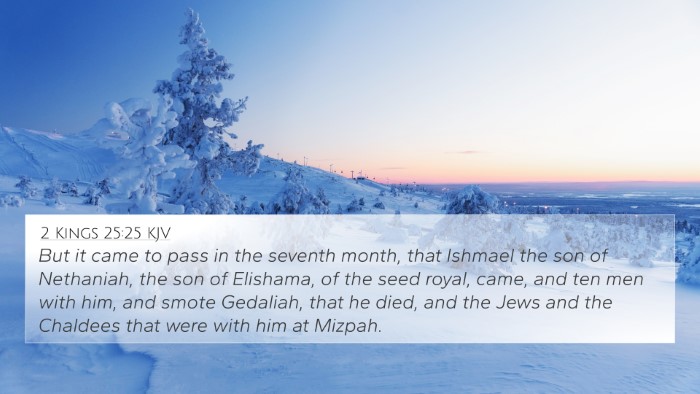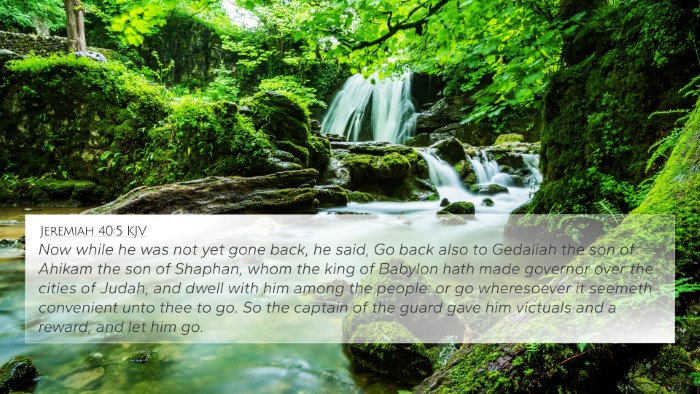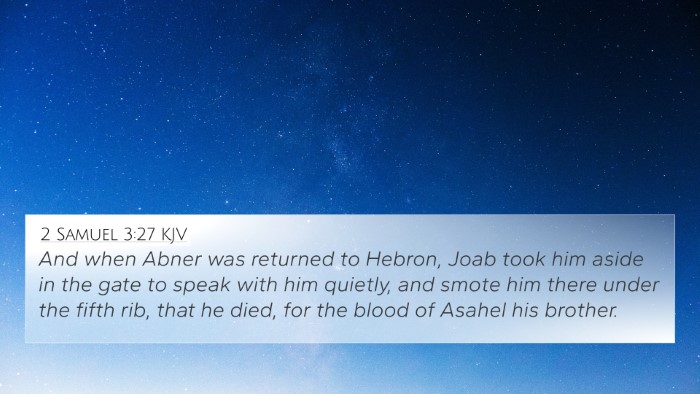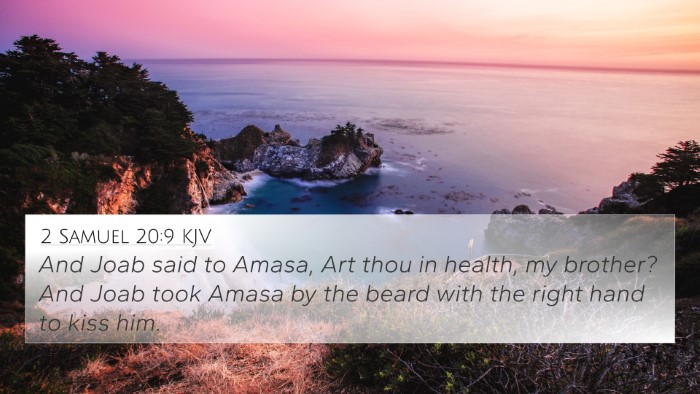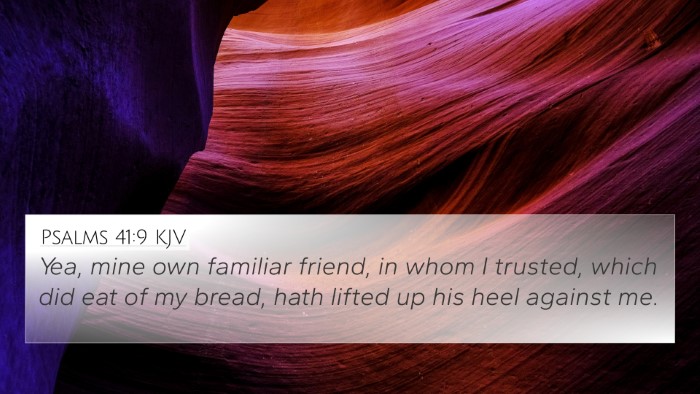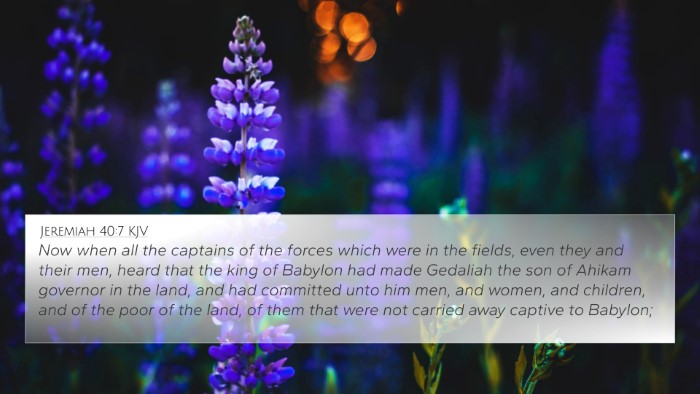Understanding Jeremiah 41:2
Jeremiah 41:2 states: "Then Johanan the son of Kareah and all the captains of the forces that were with him took all the remnant of the people whom he had recovered from Ishmael the son of Nethaniah, from Mizpah, after he had killed Gedaliah the son of Ahikam, the son of Shaphan, and thus they gathered together a remnant of the people."
Verse Context and Summary
Here, the context of the verse unfolds in the aftermath of Gedaliah's assassination by Ishmael. The verse illustrates the response of Johanan and his men as they recover the remnant of people left after this tragic event. It highlights themes of leadership, survival, and the struggle to maintain community amidst turmoil.
Commentary Insights
-
Matthew Henry:
Henry emphasizes the significance of Johanan’s leadership. He notes that despite the chaos following Gedaliah's death, Johanan acts decisively to unite the people. This speaks to the themes of responsibility and protection, as Johanan seeks to safeguard those who remain.
-
Albert Barnes:
Barnes expands on the political and social corruption that plagued the times. He highlights that Ishmael’s actions were not merely personal but indicative of larger struggles for power and survival in a fragmented society. Johanan’s actions provide a contrast, showing the importance of righteousness amidst conflict.
-
Adam Clarke:
Clarke brings attention to the details of the names and lineage mentioned in this verse. He interprets this as a vital connection to the covenant community and God's heritage. The remnant signifies hope for restoration and continuity, which is a recurring biblical theme.
Thematic Connections and Cross-References
Jeremiah 41:2 relates to several other scriptures that explore similar themes of leadership, community survival, and the aftermath of violence. Below are some key cross-references:
- Jeremiah 40:6-7: Discusses the appointing of Gedaliah and the conditions leading up to the events of chapter 41.
- 2 Kings 25:25: Describes the assassination of Gedaliah, providing context to the subsequent actions of Johanan.
- Jeremiah 42:1-3: Highlights the seeking of God’s counsel by the remnant that Johanan gathers.
- Isaiah 37:31: Discusses the remnant of Judah and the promise of survival amidst destruction.
- Micah 2:12: Speaks of God’s intention to gather a remnant of Israel, which parallels the themes in Jeremiah.
- Romans 11:5: References a remnant preserved through grace, echoing the continuity of God’s people.
- Revelation 12:17: Connects to the remnant of God’s people throughout biblical history.
Applying Cross-Referencing for Deeper Understanding
Understanding this verse involves exploring its connections through cross-referencing. This method can provide insights into the wider biblical narrative:
- Utilize a Bible Concordance: To identify related themes and leadership dynamics.
- Analyze Inter-Biblical Dialogue: Explore how other scriptures speak to the leadership styles of Johanan and Gedaliah.
- Comparative Bible Verse Analysis: Compare this situation to other instances of community crises, such as during the times of the judges.
- Study Thematic Connections: Identify verses that speak to the remnant principle in both the Old and New Testaments.
Conclusion
Jeremiah 41:2 serves as a profound reminder of community dynamics and divine preservation in the face of chaos. By understanding the connections between biblical texts and integrating insights from public domain commentaries, readers can grasp the depth of scripture's teachings and the enduring relevance of these narratives in modern contexts.

